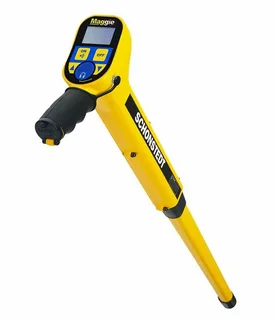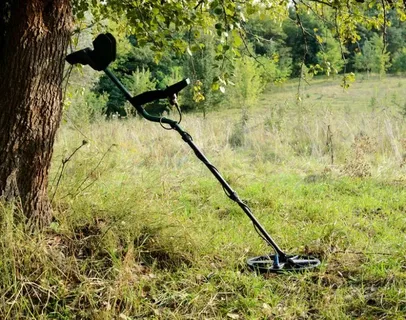Gold panning, a timeless and exhilarating hobby, offers enthusiasts a chance to uncover treasure and adventure in the great outdoors. In this beginner’s guide, we’ll delve into the art of gold panning, exploring the ins and outs of this age-old practice. Whether you’re a curious novice or a seasoned prospector, join us as we unravel the thrills of gold panning and discover the secrets that lie within the streams and rivers.
“Uncover the Thrills of Gold Panning: A Beginner’s Guide” is a comprehensive book that provides step-by-step instructions for beginners to learn and master the art of gold panning. It covers the basics of gold panning, including where to look for gold, how to use the necessary equipment, and techniques for effectively finding and collecting gold. The book also includes tips for staying safe while gold panning and advice for maximizing your chances of success. Whether you’re a complete novice or just looking to improve your skills, this guide is the perfect resource for anyone interested in the exciting hobby of gold panning.
The Art of Gold Panning: A Beginner’s Guide

Gold panning, also known as placer mining, is the process of sifting through sediment in riverbeds and streams to uncover small pieces of gold. This practice has a long history, dating back to the California Gold Rush, and continues to be a popular hobby and recreational activity today. Gold panning requires patience, skill, and a keen eye for spotting the glittering metal among the rocks and sand. Whether you’re a seasoned prospector or a curious beginner, the allure of gold panning never fails to captivate.
“The Art of Gold Panning: A Beginner’s Guide” is a comprehensive book that provides step-by-step instructions for anyone who wants to learn the techniques of gold panning. The book covers everything from understanding the equipment needed, choosing the right location to pan for gold, and the proper technique for finding and collecting gold. It also includes tips on how to identify potential gold-bearing areas and how to properly handle and care for any gold found. Whether you are a novice or an experienced prospector, this book is a valuable resource for anyone interested in the art of gold panning.
Gold Panning Techniques: Tips for Success

Gold panning techniques involve several key steps for success. First, it’s important to choose the right location. Look for areas with a history of gold mining or where gold has been found before. Then, you’ll need to find a good spot in the water to begin panning.
When you start panning, be sure to fill your pan about half to two-thirds full with gravel, sand, and sediment from the river or stream. Then, slowly submerge the pan and shake it from side to side to let the water wash away the lighter material. This will leave the heavier gold particles at the bottom of the pan.
After repeating this process, you can start to swirl the remaining material in the pan to allow the gold to settle at the bottom. Once you have a small concentration of gold in the pan, carefully remove the excess material and retrieve the gold particles.
It’s important to practice patience and have a keen eye for spotting gold among the sediment. With practice and the right techniques, gold panning can be a rewarding and successful endeavor.
Exploring New Frontiers: Gold Panning Adventures

Exploring New Frontiers: Gold Panning Adventures offers guided gold panning experiences in various locations, allowing participants to learn the techniques of gold panning and potentially find their own gold. The company provides all the necessary equipment and expertise for a successful and enjoyable gold panning experience. Participants can choose from a variety of packages, including day trips and multi-day adventures. This is a great opportunity for nature enthusiasts and history buffs to try their hand at a time-honored tradition in a scenic and educational setting.
The History of Gold Panning: From Past to Present

The history of gold panning dates back to ancient times, with evidence of the practice being found in some of the world’s oldest civilizations. Gold panning was a common method of extracting gold from rivers and streams, and was practiced by civilizations such as the ancient Egyptians, Romans, and Greeks.
During the California Gold Rush in the mid-1800s, gold panning became widely popular in the United States. Prospectors would use simple tools such as pans and shovels to sift through sediment in search of gold flakes and nuggets.
Today, gold panning is still practiced as a hobby and recreational activity in many parts of the world. While modern technology has introduced more efficient methods of gold mining, there are still dedicated enthusiasts who enjoy the simplicity and thrill of traditional gold panning.
In recent years, there has been a resurgence of interest in gold panning as a way to connect with history and nature. Many people also see it as a way to experience the excitement of potentially finding valuable gold while enjoying the outdoors.
Overall, the history of gold panning has evolved over time, but its appeal remains timeless for those who are drawn to its historical significance and the thrill of the hunt for precious metal.
Finding Hidden Treasure: The Thrill of Gold Panning
Finding Hidden Treasure: The Thrill of Gold Panning is a book that explores the excitement and adventure of searching for gold in rivers, streams, and other natural settings. Written by experienced gold panner Adam Koch, the book provides practical tips and techniques for finding and extracting gold, as well as insights into the history and culture of gold panning. With detailed instructions and captivating stories, this book is a valuable resource for anyone interested in the age-old pursuit of hunting for hidden treasure.
Gold Panning in the Modern Age: Tools and Technology
Gold panning in the modern age involves the use of various tools and technologies to improve efficiency and accuracy. Some of the tools commonly used in gold panning include metal detectors, prospecting picks, classifiers, and sluice boxes. Metal detectors help to locate gold nuggets and deposits, while prospecting picks are used to break up hard soil and rock. Classifiers are used to sift through the material and separate the larger chunks from the finer particles, and sluice boxes are used to trap the gold particles as the water flows through.
In addition to traditional tools, modern technology has also made its way into gold panning. For example, there are handheld GPS devices that can help prospectors track the locations where they have already panned for gold, as well as digital scales for accurately weighing the gold they find. Furthermore, advancements in metal detecting technology have made it easier to pinpoint the location of gold deposits, making the panning process more efficient.
Overall, the use of tools and technology in modern gold panning has helped to make the process more precise and productive, allowing prospectors to maximize their chances of finding gold.
Eco-Friendly Gold Panning: Protecting the Environment
Eco-friendly gold panning refers to the practice of extracting gold from rivers and streams while minimizing impact on the environment. This can involve using non-toxic and biodegradable materials, such as plant-based oils, for the separation of gold from sediment. Additionally, eco-friendly gold panners prioritize leaving minimal disturbance to the natural habitat, filling in holes and trenches, and properly disposing of any waste generated during the process. These practices help to protect the local ecosystem and promote sustainable gold mining.
Gold Panning Hotspots: Where to Strike it Rich
Gold panning hotspots can be found in various locations around the world, including California, Alaska, Canada, Australia, and other areas known for their gold deposits. Some popular gold panning hotspots include the American River in California, the Klondike region in Alaska, the Fraser River in British Columbia, and the famous goldfields in Victoria, Australia. These areas are known for their rich history of gold mining and continue to attract prospectors looking to strike it rich. It’s important to research and follow local regulations and guidelines when gold panning in these hotspots to ensure a safe and legal experience.
From Hobby to Hobby: The Joys of Gold Panning
“From Hobby to Hobby: The Joys of Gold Panning” is a book that provides a comprehensive guide to the art of gold panning. It covers everything from the history of gold mining to the techniques and equipment needed for successful panning. The book also includes tips on where to find gold, how to identify gold in the field, and how to properly extract and refine gold once it’s been found. Whether you’re a seasoned prospector or a beginner looking to try your hand at gold panning, this book offers valuable insight and practical advice for anyone interested in this fulfilling hobby.
Gold Panning: A Timeless Tradition of Discovery
See also: gold mining machinery
Gold panning is a method of extracting gold from rivers and streams using a shallow pan. It has been practiced for centuries and is often associated with the California Gold Rush of the mid-1800s. Gold panning involves carefully swirling water and sediment in a pan to separate the heavier gold particles from the rest. It is a popular hobby and recreational activity, with many dedicated enthusiasts still finding small amounts of gold in riverbeds around the world. While the chances of striking it rich are slim, the allure of uncovering a valuable nugget continues to draw people to this timeless tradition of discovery.